Gold price waits for rates clues from Jackson Hole
Political turmoil in the US has the potential to 'help gold in the short and longer term'
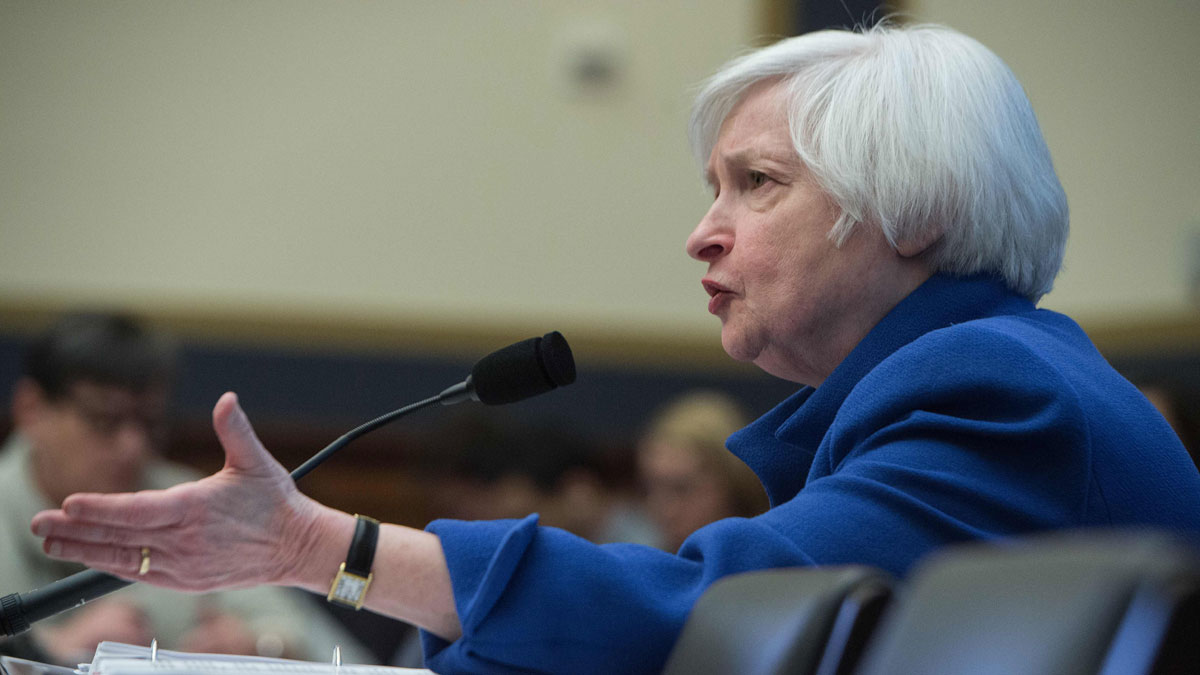
Gold price rebounds as Fed minutes buoy bugs
20 August
Gold's rebound is gathering pace as the precious metal posts strong gains in the wake of minutes from the Federal Reserve's latest board meeting, which some suggest points to a reduced chance that interest rates will rise in September.
Reuters reported yesterday that gold bugs – the name given to investors in the precious metal – pushed it to a one-month high of $1,132 before it eased back, with traders noting "resistance" at $1,135. On Thursday morning spot gold rose further and breached $1,140 an ounce, before again falling back slightly.
The Week
Escape your echo chamber. Get the facts behind the news, plus analysis from multiple perspectives.

Sign up for The Week's Free Newsletters
From our morning news briefing to a weekly Good News Newsletter, get the best of The Week delivered directly to your inbox.
From our morning news briefing to a weekly Good News Newsletter, get the best of The Week delivered directly to your inbox.
The Financial Times says the minutes from the Federal Open Market Committee’s July meeting "seemed to cast doubt on the possibility of a hike in official borrowing costs" in September. While most members judged that "conditions were approaching that point" where a rise would be justified, they also expressed concern over "spillovers" from slower growth in China, the stronger US dollar and the ongoing weakness in the labour market.
Gold has particularly benefitted from the uncertainty on China, which has recently moved to dramatically devalue its currency in a shock move that some argued was aimed at boosting its waning export market. Concerns over growth have also left its stockmarkets in the grip of extreme volatility and led global investors to rush to traditional safe havens – such as gold – to hedge against the risks of a wider ripple effect.
The metal was also boosted this week by a change in tone from analysts at HSBC, who had last month reduced price forecasts. Analysts now predict prices will rise significantly by the end of the year to above $1,200 an ounce. According to CNBC a report from the bank cited a number of reasons for a more bullish outlook, including that an interest rate rise may already be "priced in". Historically trends suggest a hike in borrowing costs could hit the dollar, which tends to move inverse to gold, and that recent lower prices could spur demand.
Against such forecasts many continue to believe an increase in rates could reduce the attraction of non-yielding assets such as gold, while demand from big markets such as China was actually falling even before the effects of the currency devaluation, which will increase import prices, is counted.
A free daily email with the biggest news stories of the day – and the best features from TheWeek.com
Gold price: China prompts rush to safety, but doubts remain
18 August
The gold price has defied gloomy sentiment and an impending rate rise in the US to record gains during the first weeks of August, but it remains trapped in "narrow ranges" and susceptible to a renewed slide.
Having dipped as low as $1,080 in July after the largest monthly fall in two years, gold has rallied of late as a sharp currency devaluation in China has prompted a rush to perceived 'safe havens'. But "the price rebound has been moderate": the precious metal is still 40 per cent down from its 2011 peak and Financial Express notes it remains "trapped in narrow ranges".
The Wall Street Journal reports that spot gold rose marginally to $1,118 an ounce in Asia trading, where it remains on Tuesday morning in London.
Emphasising the negative perception of prospects which had set in, the Financial Times says data compiled from regulatory filings show institutional investor funds withdrew around $2.3bn (£1.5bn) from major gold index tracking funds in July. Nitesh Shah, an analyst at ETF Securities, the firm that pioneered low-cost gold tracker funds, said the bearish sentiment is still prevailing and that outflows have been recorded even "in the past few weeks".
Critical to the near-term trend will be the Federal Reserve's decision on interest rates, which many still expect to be increased in September. Others say they could remain on hold until December or even into next year. A move on rates would reduce the appetite for non-yielding commodities such as gold and would probably trump any continuing benefit from the China ripple effect.
The FT notes, however, that some more speculative investors are betting the re-emergence of gold as a currency hedge will bring about a more marked increase that will see it break its current shackles.
For example Stanley Druckenmiller, a legendary hedge fund manager who previously worked for George Soros, bought $324m (£206m) worth of shares in one major gold trust at the end of June.
Gold price: demand falls to six-year low
13 August
Demand for gold fell to its lowest level for six years in the three months to June – the result of declining orders from jewellers in dominant markets, as well as from global central banks.
Figures from the World Gold Council reveal global demand fell by 12 per cent to 915 tonnes in the second quarter, the Daily Telegraph reports. Half of this fall was accounted for by sharp declines in jewellery demand in India and China, while central bank purchases fell 13 per cent, the Financial Times adds.
Gold prices have been in broad decline since hitting a peak in 2011 and fell at the fastest monthly rate for two years in July. They have, however, rallied strongly and enjoyed five consistent sessions of positive closes so far in August.
This has been driven most recently by three days of sharp currency devaluation in China that has rattled global markets and prompted investors to flee to traditional safe havens.
Having hit a three-way intra-day high quoted by the Wall Street Journal at $1,026 an ounce on Thursday, spot gold has slipped back slightly to $1,018.
CNBC's respected analyst Daryl Guppy has said technical analysis suggests gold is struggling to find support at key thresholds and is likely to continue a longer term decline, perhaps taking it below $1,000 an ounce. On the other hand, a prolonged currency 'war' could re-establish its credentials as a currency hedge and hold prices higher.
The short-term upward trend is being helped by speculation that a US rate rise is likely to happen somewhat later than previous expectations of September – downward pressure will return when an increase comes into sharper focus.
Devaluation in China will also have the effect of increasing import prices, which could weigh further on demand.
-
 What a rising gold price says about the global economy
What a rising gold price says about the global economyThe Explainer Institutions, central banks and speculators drive record surge amid ‘loss of trust’ in bond markets and US dollar
-
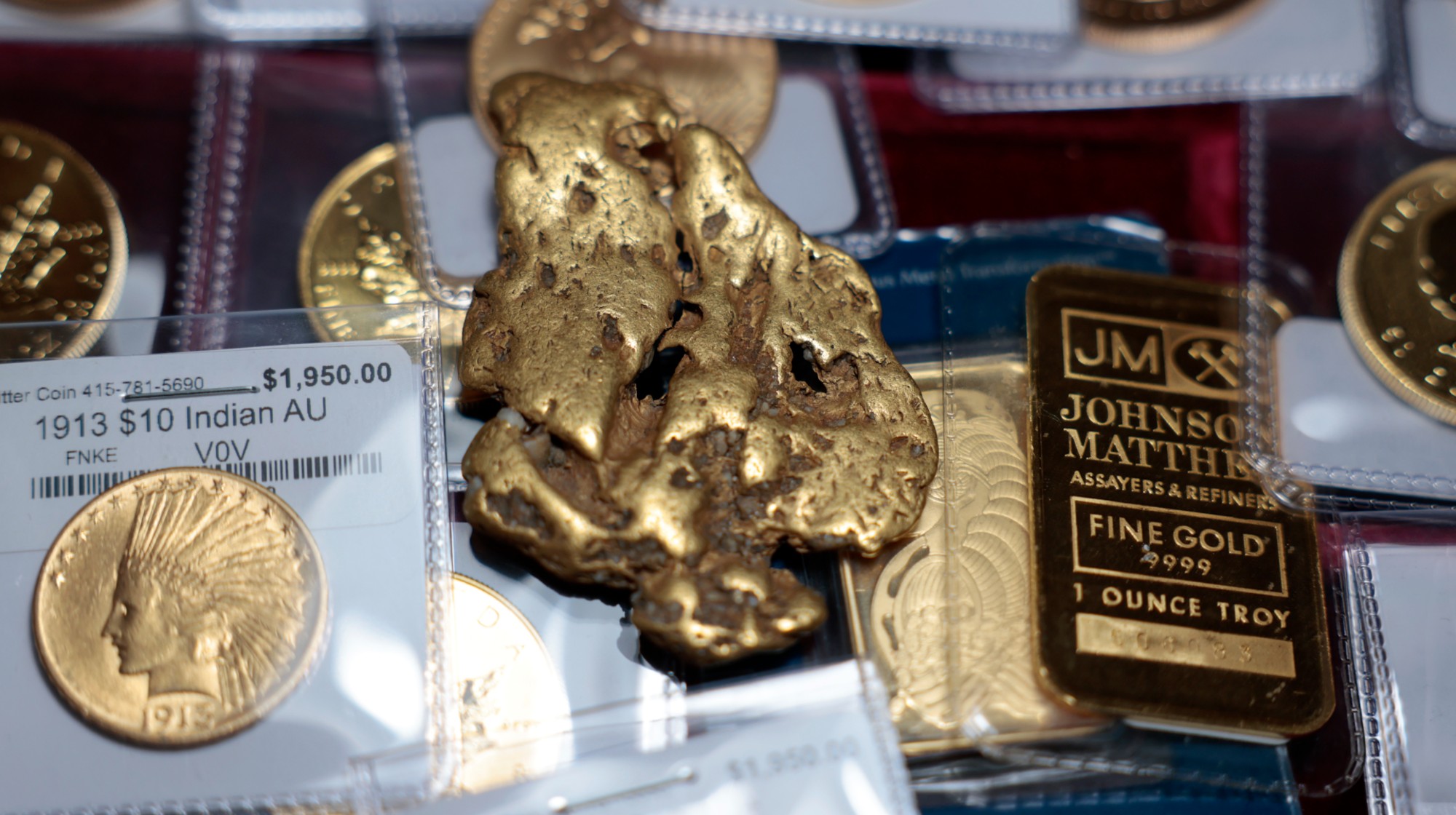 Gold tops $4K per ounce, signaling financial unease
Gold tops $4K per ounce, signaling financial uneaseSpeed Read Investors are worried about President Donald Trump’s trade war
-
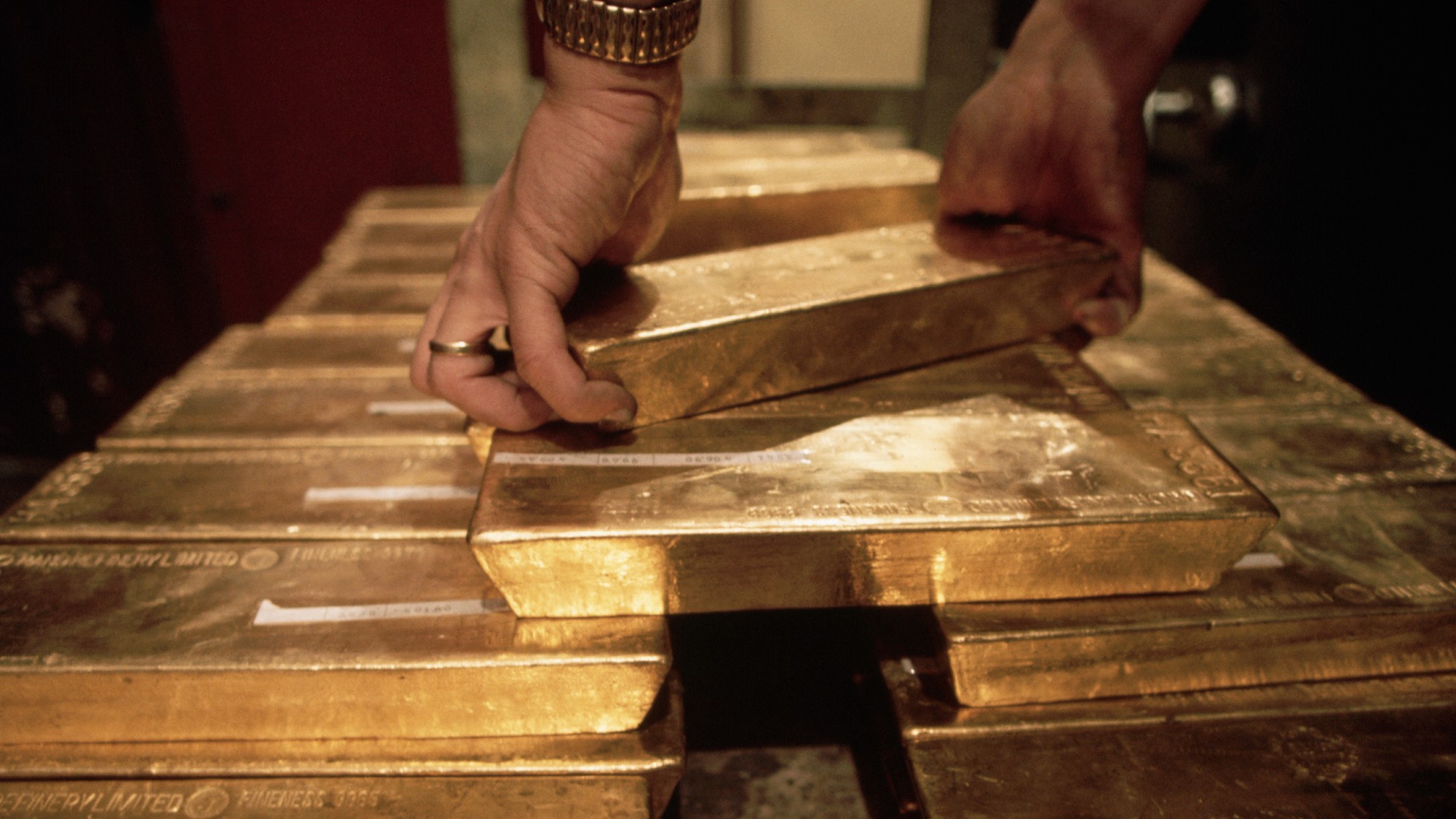 Safe harbor: Gold rises as stocks sink
Safe harbor: Gold rises as stocks sinkfeature It's a golden age for goldbugs
-
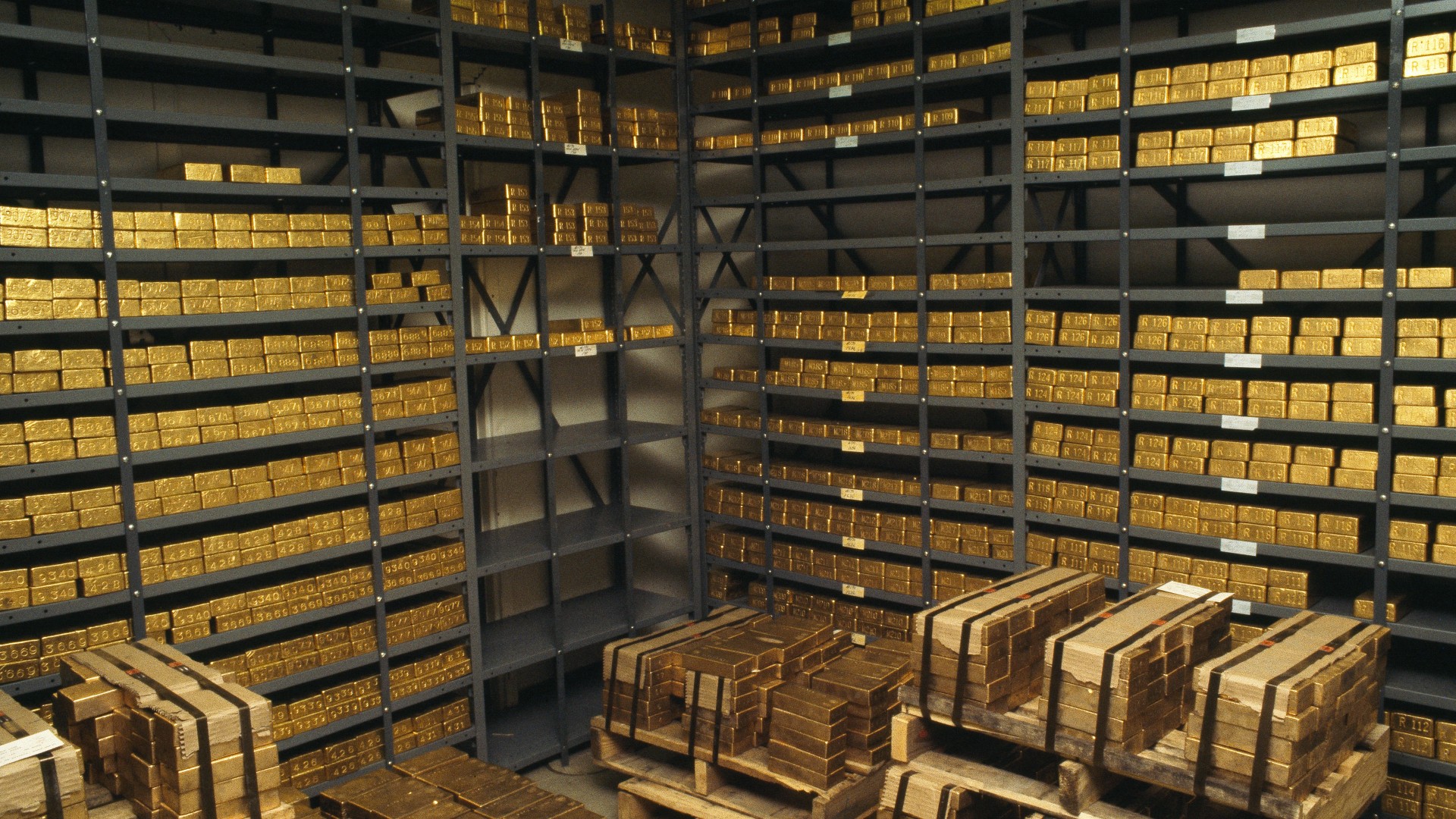 What rising gold prices can tell us about the economy in 2024
What rising gold prices can tell us about the economy in 2024The Explainer Market hits all-time high, boosted by a weakening US dollar and rising global tensions
-
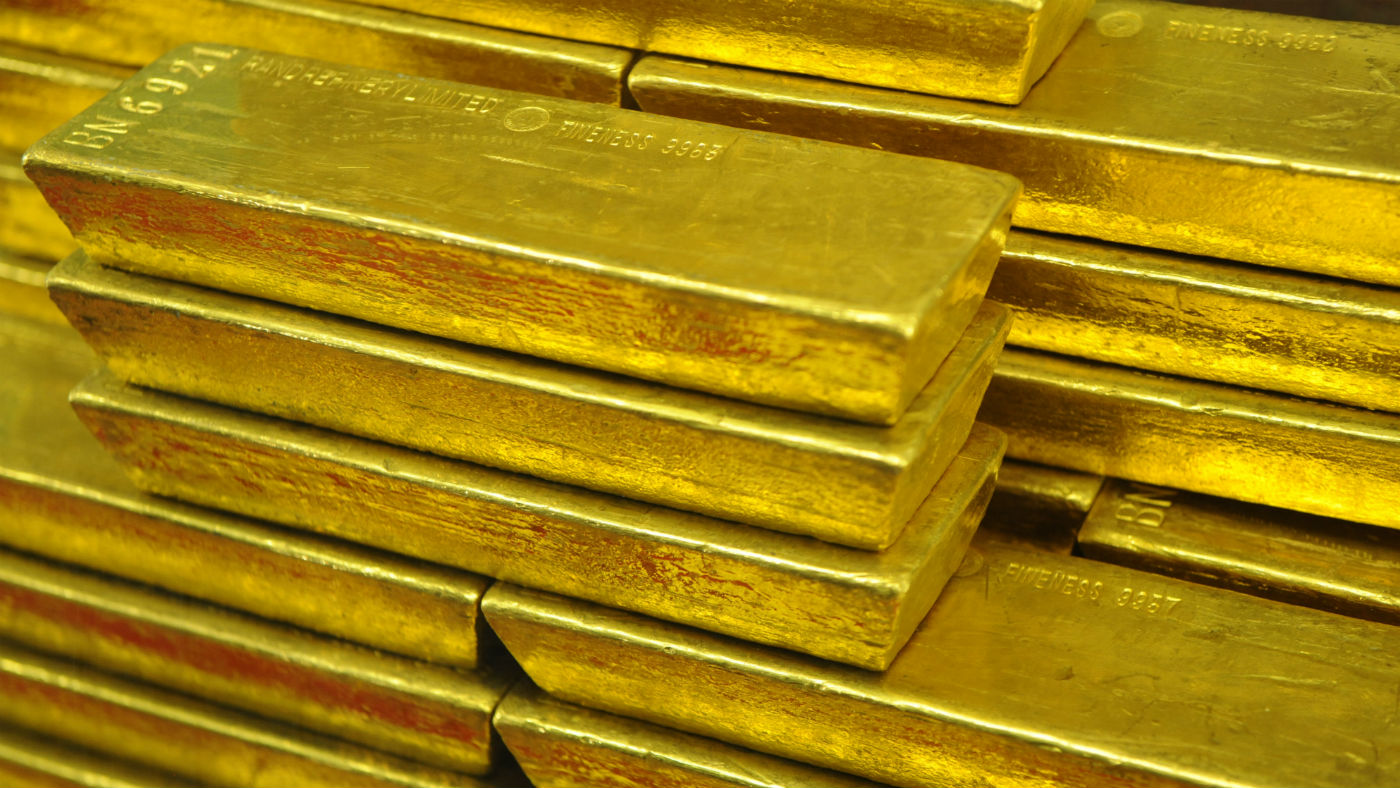 Gold’s ‘flash crash’: what the experts think
Gold’s ‘flash crash’: what the experts thinkfeature Bad news, good news and a loss of faith
-
 What is the price of gold and when is best to buy?
What is the price of gold and when is best to buy?Speed Read Economic and geopolitical uncertainty traditionally drives investors to reliable metal markets

